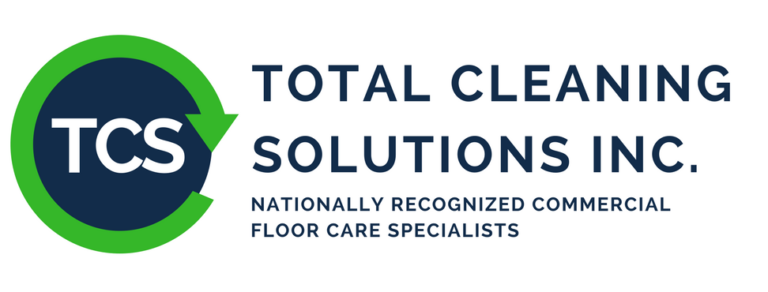Every floor gets worn out eventually, especially commercial floors that experience far more wear and tear regularly than their residential counterparts. Speaking of which, such a floor is not just ugly to look at; it’s actually a potential hazard.
People may slip or trip, which can result in serious injuries. Those scenarios are best avoided altogether, wouldn’t you agree? Be that as it may, the first thing to go on commercial floors is the finishes or topcoats, if you will.
These are protective layers placed over concrete or VCT (Vinyl Composite Tile) floors to ensure that dirt, grime, or any kind of spills get directly into the floor itself. However, as protective as these layers can be, they are not indestructible and will eventually start to decay.
This, of course, may not happen in a long while, but the more foot or vehicle traffic and different damage the floor endures, the sooner any topcoats or finishes will have to be replaced. This is where floor stripping comes into play.
As the name suggests, this process involves stripping down any worn-down coatings, sealers, or finishes from the floor and replacing them with a brand-new coat of the same. With that in mind, let’s have a closer look at when the best time to strip the floor is, why, and how to do it properly.
When Should You Strip Your Floors?
As mentioned before, every floor will show signs of wear and tear eventually. However, that doesn’t mean it’s ready for the stripping process. A crack here and there isn’t something to be alarmed about, but that does mean you should keep an eye on how the situation progresses.
On the other hand, a floor that is heavily damaged, stained, and has lost its shine is definitely ready for a makeover. At this point, cleaning it thoroughly or trying to fix the damage will no longer prove to be a viable option. You have no other choice but to completely strip down the coating and replace it with a new one.
Now, when exactly your floor will reach the point of no return depends on various factors and circumstances. For example, different concrete floor coatings have different levels of durability. That said, acrylic coating is less durable than epoxy, but if the epoxy floor experiences more foot traffic and frequent impact damage, it will last shorter than the acrylic one.
Why Should You Strip the Floors?
Yes, why indeed? No one pays much attention to the floor anyway, right? Well, that may be partially true, but a heavily stained floor that’s cracked all over is kinda difficult to ignore. This is especially true for facilities that people frequent every day.
Just imagine a restaurant or a hospital with such floors. Do you think people would come back there when they see the state the floor is in? It doesn’t really speak hygienic and safe, does it?
Speaking of safety, a damaged floor can really become a safety hazard if left ignored. Oil spills, for instance, that haven’t been cleaned right away, can seep into the pores in the floor coating, making it permanently slippery.
Moreover, cracks or pits created from impact damage or heavy foot traffic can make people trip over them. A good example is a vinyl composition tile floor that’s given way to damage. Now, try to imagine riding a facility vehicle and running into a hole where a tile used to be.
Best case scenario: it’s a bumpy ride, worst case scenario: the vehicle trips over, spills the load it was carrying, and injures the driver. This is not the type of floor you want to have in your facility, under any circumstances. That is exactly why you need to strip it when the time comes.
How to Strip the Floors – Tips for Best Practices
When the time comes to strip the floors completely, you’ll have to plan everything out accordingly. Of course, how the stripping process will proceed depends on the circumstances.
For example, wax stripping is much simpler than VCT stripping, mainly because they’re completely different materials and both are applied differently, to begin with.
In any case, knowing which coating or sealer is currently covering your facility floor will help you understand how to remove it properly. Before you begin the process, here are a few things you should do.
Preparing the Surface Area
- Remove any furniture, electronics, and mechanical devices from the facility.
- Make sure the space is properly ventilated, because both wet and dry stripping create dust and fumes that can be hazardous.
- Clean the floor of any dust, dirt, and debris.
- Apply the proper solution on the floor that will loosen and soften the coating or sealer, and let it do its thing.
Start the Stripping Process
Once the stripping solution has done its job, you can start stripping the floor. Whether you’re about to engage in tile stripping or vinyl floor stripping, the best approach is to use an industrial scrubber.
This is a type of cleaning machine that can be ridden or walked behind, depending on the model. That said, industrial scrubbers have much more power, and they can vacuum, as well as clean, the residue that they leave behind. In other words, a scrubber will make your job much faster and easier.
Once the scrubber removes all traces of old coatings or sealers, you should vacuum the rest of the residue and clean the surface before applying a new coating or sealer. It’s very important not to leave any dirt or debris before applying a new topcoat, or you’ll have to start from scratch.
Clean the Floor Again
Now that the floor has been thoroughly scrubbed and a new coating has been applied, wait for it to dry out and clean everything once more. The main reason is that you can now polish the floor or perhaps apply another layer of floor finishing, like wax, for instance.
It all depends on the facility and their needs, but generally speaking, cleaning the floor after everything is set and done is just good practice to ensure that the new coating will last a good while before it needs to be replaced again. Regular maintenance and cleaning are essential to ensure both safety and hygiene within the facility.
Strip Your Floors the Right Way with TCS Floors

Alt Text: An image of the TCS Floors company logo.
Stripping an entire facility floor is not an easy job. It’s completely fine if you can’t or don’t have the means to do it on your own. That’s precisely the moment when you should hire professionals to help you out.
Here at TCS Floors, we have both the equipment and the know-how to assist you in every way possible. Our expertise and dedication to results come from our 30 years of experience in the field. We know everything there is to know about stripping floors and cleaning them.
That said, feel free to take a closer look at our previous work, and if you like how we do things, don’t hesitate to give us a call today. We’ll assess the situation and come up with a solution that will meet both your needs and your budget.
Final Thoughts:
The process of floor stripping can be very demanding, not to mention complicated. There are simply a lot of factors that need to be considered before the stripping process can be conducted properly. With the right equipment and tools, you can easily plan ahead and renew your floor to its former glory.
FAQ:
What does floor stripping mean?
Floor stripping, as the name suggests, is a process of stripping former sealers or coatings covering the floors using specific solutions and proper tools.
Every sealer or coating is placed to protect the floor from damage and spills, but even those protective layers get worn out over time. That’s precisely when they have to get stripped and replaced.
What is the difference between scrubbing and stripping?
Simply put, stripping removes entire topcoats or finishes on the floor to the point where you reach concrete or any other material the floor is made of.
On the other hand, scrubbing removes just a thin layer of the topcoat or finish without the need to replace it entirely. Once scrubbed, you can reapply another thin layer of coating or finish to renew the floor.
What do you use to strip a floor?
In most cases, a solution that will soften the existing coating is used prior to the scrubbing. This will make the coating easier to remove. Once that is done, an industrial scrubber is often used to strip the entire surface of the floor, completely removing any coatings in the process.
What is dry floor stripping?
Dry stripping refers to the floor stripping process without the use of any chemicals. In other words, instead of using a chemical solution to soften the coating or sealer, you brute-force it with a scrubber. This is usually done when the layer of coating is pretty thin to begin with, so no chemicals are actually required to remove it.


